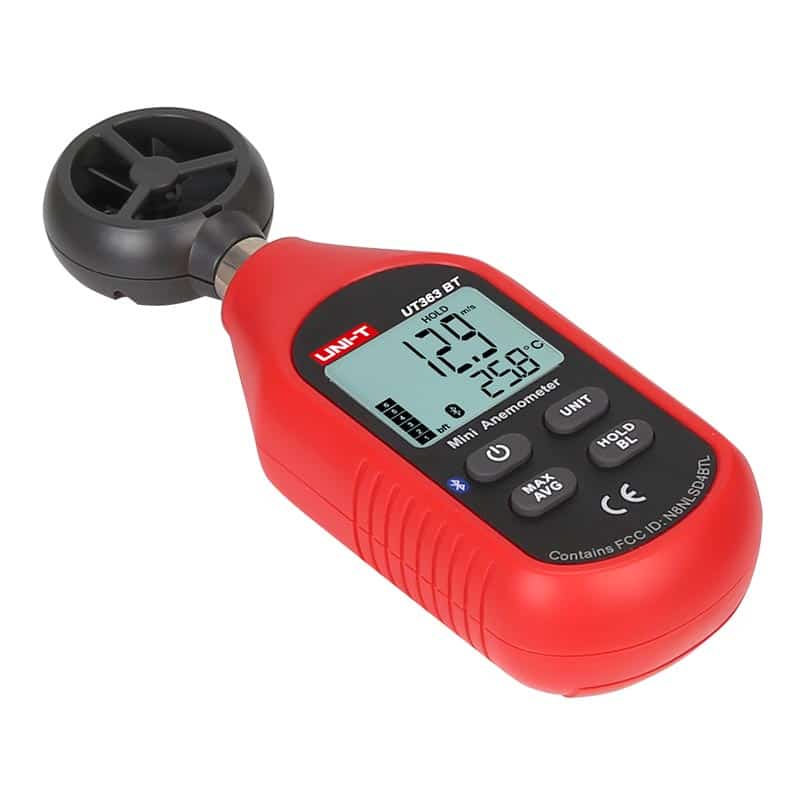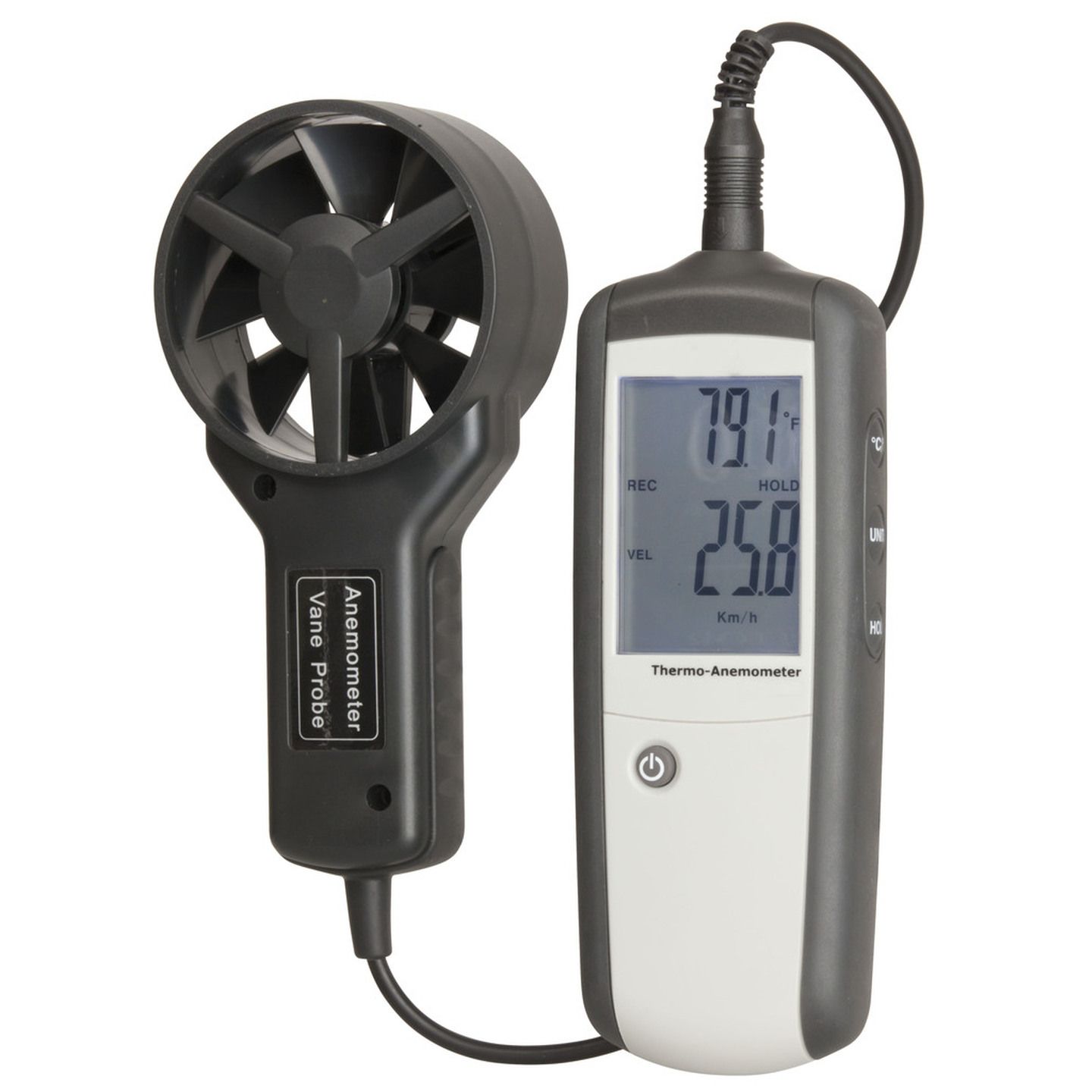Recognizing Different Sorts Of Anemometers for Different Applications
Exploring the Features and Advantages of Anemometers for Weather Condition Enthusiasts and Professionals
Anemometers stand as important tools in the realm of weather condition tracking, accommodating both enthusiasts and seasoned experts alike. These gadgets supply a home window right into the vibrant globe of wind patterns and rates, giving important data for meteorological analysis and forecasting. From cup anemometers to sonic anemometers, each kind brings its unique set of benefits and applications, clarifying various aspects of weather. As we explore the functions and advantages of anemometers, a much deeper understanding emerges not just of dominating weather sensations however additionally of the more comprehensive ramifications for industries like wind power manufacturing and environmental research.
Importance of Anemometers in Weather Condition Surveillance
Anemometers play a crucial function in climate surveillance by supplying exact dimensions of wind rate, assisting in forecasting and understanding weather patterns. These instruments, ranging from conventional mug anemometers to modern ultrasonic anemometers, are vital for meteorologists, scientists, and climate lovers alike.

Sorts Of Anemometers and Their Applications
The most common types of anemometers include cup anemometers, vane anemometers, hot-wire anemometers, and ultrasonic anemometers. Mug anemometers are composed of three or four mugs mounted on straight arms that turn with the wind, gauging its speed. Vane anemometers, on the other hand, utilize an openly rotating vane to straighten with the wind instructions, providing both wind speed and direction measurements.
Each type of anemometer has its distinct benefits and applications. Cup anemometers are suitable and durable for basic weather tracking, while vane anemometers are preferred for directional measurements. Hot-wire anemometers are sensitive to reduced air rates, making them perfect for indoor atmospheres. Ultrasonic anemometers are non-intrusive and provide high accuracy, typically made use of in study and specialized climate surveillance applications. Understanding the attributes and applications of each sort of anemometer is essential for picking the most appropriate instrument for details weather condition keeping an eye on requirements.
Benefits of Utilizing Anemometers in Projecting
In meteorology, the use of anemometers supplies very useful benefits for improving the accuracy of climate projecting. Anemometers determine wind rate and direction, offering critical data for predicting weather condition patterns. By integrating wind data right into projecting versions, meteorologists can much better recognize the movement of climate systems, prepare for modifications in weather, and problem extra specific forecasts.
Additionally, anemometers play a crucial function in evaluating potential climate hazards. Monitoring wind speeds aids forecasters forecast severe weather condition occasions such as cyclones, twisters, and wintertime storms with higher precision. This early warning system allows authorities to release prompt alerts and implement required security actions, lowering the dangers to life and residential property.
In addition, anemometers help in enhancing renewable energy manufacturing. By evaluating wind patterns, meteorologists can recognize appropriate areas for wind farms and predict power output, adding to the efficient generation of wind power.

Anemometers in Wind Energy Production
Given the crucial duty anemometers play in offering exact wind data for weather condition projecting and risk analysis, their significance includes the world of wind power manufacturing. Anemometers are crucial instruments in the area of wind power, try this out where the measurement of wind speed and instructions is critical for establishing the usefulness and effectiveness of wind turbine installations. By accurately gauging wind rates at varying elevations, anemometers aid enhance the positioning and style of wind turbines to make the most of power outcome.
In wind farms, anemometers are strategically positioned to click here for more gather real-time wind information that is made use of to evaluate the prospective power manufacturing of a website. This information is instrumental in identifying the economic stability of wind power tasks and in forecasting power generation to make certain grid stability. Additionally, anemometers help in checking wind problems to maximize generator efficiency, stop damages from high winds, and make certain the safety and security of workers working in the area of wind turbines.
Enhancing Weather Condition Comprehending With Anemometers

Anemometers play a crucial role in enhancing our understanding of microclimates. These localized climate conditions can vary substantially from broader local projections, making it important to have exact information for details areas. anemometer. By strategically positioning anemometers in content different locations, researchers can gather in-depth information on exactly how wind behaves in various terrains, metropolitan environments, or bodies of water
In addition, anemometers add to improving weather forecasting models by offering real-time information on wind behavior. This information is particularly important for anticipating extreme climate events, enhancing agricultural methods, and supporting markets like air travel and maritime navigating. In general, anemometers are invaluable instruments that enable us to dive much deeper into the intricacies of climate systems, inevitably resulting in more exact forecasts and better-informed choices.
Conclusion
In conclusion, anemometers play a vital role in weather tracking and projecting by measuring wind speed and direction. Anemometers likewise have applications in wind power manufacturing, further highlighting their relevance in both weather forecasting and eco-friendly energy industries.
From cup anemometers to sonic anemometers, each kind brings its one-of-a-kind collection of applications and advantages, dropping light on different elements of climatic problems. These tools, varying from traditional cup anemometers to modern ultrasonic anemometers, are vital for meteorologists, scientists, and climate fanatics alike. The most usual kinds of anemometers consist of mug anemometers, vane anemometers, hot-wire anemometers, and ultrasonic anemometers. Mug anemometers are ideal and durable for basic climate surveillance, while vane anemometers are preferred for directional dimensions. Anemometers are essential instruments in the area of wind power, where the dimension of wind rate and instructions is vital for establishing the usefulness and performance of wind generator installments.